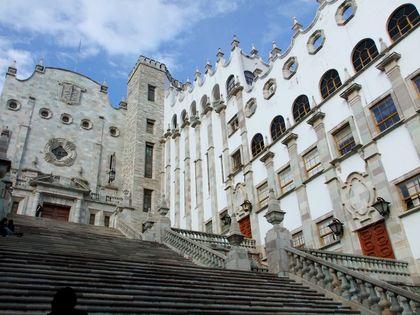Mexico - Education

Primary schooling is compulsory and free. Except in the Federal District, where education is administered by the federal government, schools are controlled by the states. As of 1995, public expenditure on education was estimated at 5% of GDP.
Between 1960 and 1965, for each 100 pupils enrolled in the first grade, only 23 completed the sixth, for an attrition rate of 77%. At the other end of the educational cycle, only 12,000 graduated from institutions of higher education. A 1968 government report stated that approximately 97% of Mexico's youth between the ages of 16 and 25 were unprepared to participate in the country's development. In 1971, only 74% of children of the age for obligatory schooling (between 6 and 14) attended school. Significant improvement had been recorded by the late 1970s, when an estimated 92% of eligible boys and 90% of eligible girls were actually in primary school; the figures for secondary school in 1984 were 56% and 53%, respectively. By the 1990s virtually 100% of primary-school-age children were enrolled in school. In 1999, 57% of secondary-school-age children attended school.
During 1965, the government established 7,000 new literacy centers, raising the total to 11,000. The literacy program helped reduce Mexico's adult illiteracy rate from 37.8% in 1960 to8.5% in 2000 (males: 7% and females: 10%). In 1997, Mexico had 524,927 teachers and 14,650,521 students in 95,855 primary schools, with a student-to-teacher ratio of 28 to 1. At the secondary level, there were 485,059 teachers and 7,914,165 students in that same year. The pupil-teacher ratio at the primary level was 25 to 1 in 1999.
Major universities include the National Autonomous University (founded in 1551), the National Polytechnic Institute, and Iberoamericana University (private), all in Mexico City, and Guadalajara University, the Autonomous University of Guadalajara, and the Autonomous University of Nuevo León. In each state there are other state and private institutions. There were 170,350 teaching staff and 1,612,318 students in all institutions of higher learning in 1997.
The government provides extracurricular education through cultural and motorized missions, community-development brigades, reading rooms, and special centers for workers' training, art education, social work, and primary education.